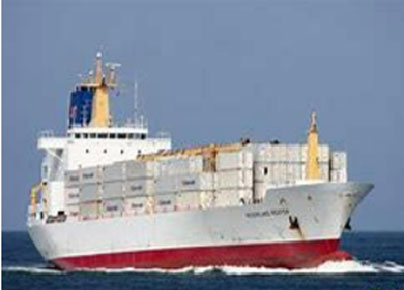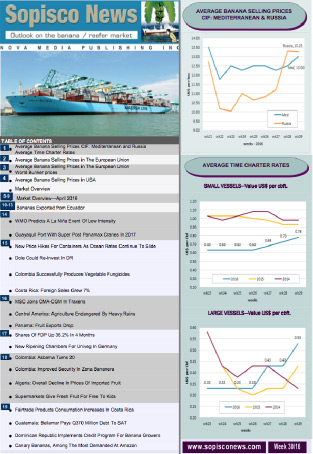Reefer Shipping Rates rise Temporarily, According to Drewry
2024-03-15

The recent surge in reefer shipping rates is anticipated to be temporary as the industry adjusts to vessel rerouting and deploys excess containership capacity to accommodate longer transit times. While the ongoing cargo rerouting continues to cause delays and complexity in repositioning reefer equipment, it is expected to have a short-term impact on freight rates.
Drewry's Global Reefer Container Freight Rate Index, a weighted average of freight rates across reefer-intensive trade lanes, declined 37% in 4Q23 to a reading of $4,065 per 40ft container but is estimated to have moderately recovered in the current quarter.
Persistent violence in the Red Sea is causing shipping lines to reroute cargoes via the Cape of Good Hope, while record low water levels in the Panama Canal are causing delays. Despite the uncertainty of the long-term outcome of events in the Middle East, reefer container freight rates are expected to resume their downward trajectory over this year.
The influx of newbuild container vessels entering the market this year is expected to counterbalance recent upward pressure on rates, with average reefer container freight rates predicted to revert to their long-term downward trend later this year. These are the main conclusions from Drewry's recently published Reefer Shipping Forecaster report.
Trade volumes have been largely unaffected by the disruption, with volumes for the fourth quarter estimated to have risen by 3.2% YoY. The arrival of El Nino in 2023 continues to impact fruit crops globally, as the increasing unpredictability of weather systems has affected production. For instance, banana trade was down by 1.3% YoY last year. However, nearly all the largest producing countries recorded more robust growth in the second half, coming from a low baseline in 2022. Trade in melons and berries was hardest hit, falling by 6.8% YoY in 2023 due to poor harvests in South America, leading to a scarcity of quality produce.
A secondary impact of rerouting cargoes has been on the pool of reefer container equipment, as extended transits have meant that empty boxes take longer to be redistributed across the network. Despite this, Drewry expects the global pool of reefer containers to expand at just under 10% over the next five years, a downgrade from previous forecasts. This results from some easing in oversupply following the pandemic, coupled with better fleet monitoring in the future, which is expected to drive efficiencies and streamline operations.
Volumes on nearly all major reefer-intensive trade routes fell last year as an expected uptick in cargo demand failed to materialise. Deflationary pressure in China meant critical North America and North Europe to Asia volumes slid further in the final quarter. Meanwhile, trades to and from Europe continue to evaluate the impact of ETS costs on competitiveness. The next milestone will require companies to submit allowances for 70% of verified emissions next year, rising to 100% in 2026, depending on vessel size.
Despite persistent volatility in the global economy, the core nature of reefer commodities in supporting the world's expanding population means that the sector is expected to return to growth. After declining in 2023, Drewry forecasts that seaborne reefer traffic will recover in 2024, growing by 1.7%. The shift to containerships is also set to continue, with containerised reefer traffic projected to deliver a CAGR of 3.1% over the next five years, which will help to support reefer freight rates over the medium term.









